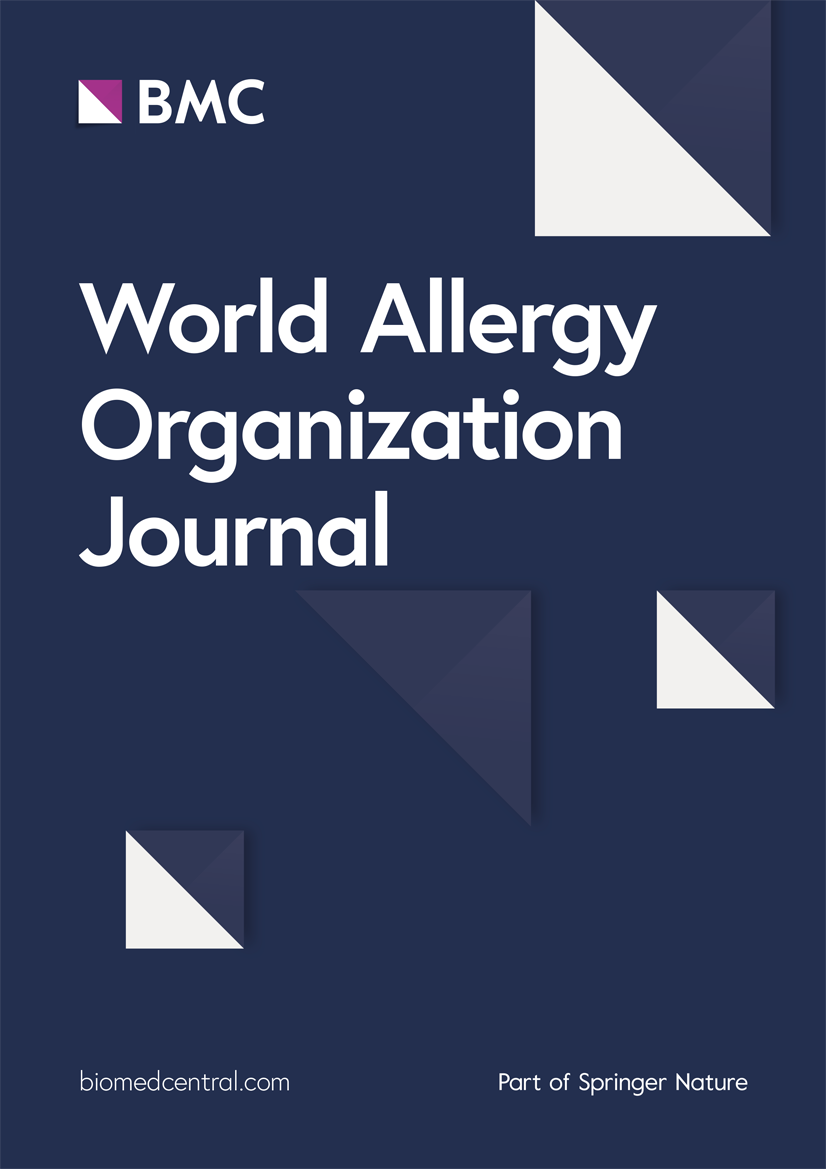循环甲状腺过氧化物酶(TPO)、抗TPO IgE、抗TPO IgG与慢性荨麻疹不同临床结局之间的关系:一项假设生成研究
IF 4.3
2区 医学
Q2 ALLERGY
引用次数: 0
摘要
在慢性自发性荨麻疹(CSU)中,已经发现了多种生物标志物,包括抗甲状腺过氧化物酶(TPO)的自身抗体。然而,目前还没有同时分析IgE抗TPO和IgG抗TPO与血TPO的关系。目的探讨血TPO、抗TPO IgE和抗TPO IgG与临床变量的关系。方法本研究纳入年龄12-80岁临床诊断为CSU的患者。首先,比较CSU组和非CSU组之间的生物标志物(病例对照设计)。其次,对CSU组进行为期12个月的随访,探讨生物标志物与临床特征之间的关系。结果CSU组TPO血药浓度高于对照组,但差异无统计学意义(中位数3.8 ng/mL vs. 13.3 ng/mL p = 0.4)。血TPO浓度与抗TPO IgE或IgG的存在无关。共有42例患者(61.2%,非csu组为9.3%)存在抗tpo IgG(29.4%)或抗tpo IgE(42.6%)自身抗体,7例患者(10.2%)两者兼有。在探索性分析中,抗tpo IgE和抗tpo IgG与不同的临床聚集性相关。结论:在这项产生假设的研究中,TPO水平似乎不能决定CSU患者自身抗体的存在。大约一半的CSU患者具有针对TPO的IgE或IgG自身抗体,但很少患者同时具有这两种抗体,并且每种自身抗体与不同的临床特征相关,这表明可能存在具有共同靶点的独立CSU机制。需要进一步的研究来证实这一假设。本文章由计算机程序翻译,如有差异,请以英文原文为准。
Association between circulating thyroperoxidase (TPO), anti-TPO IgE, anti-TPO IgG, and different clinical outcomes in chronic urticaria: A hypothesis-generating study
Background
In chronic spontaneous urticaria (CSU), multiple biomarkers have been described, including autoantibodies against thyroperoxidase (TPO). However, the simultaneous analysis of both IgE anti-TPO and IgG anti-TPO alongside blood TPO has not been performed.
Objective
We conducted this hypothesis-generating study to evaluate the association between blood TPO, anti-TPO IgE, and anti-TPO IgG and explore their relationships with some clinical variables.
Methods
Patients aged 12–80 years with a clinical diagnosis of CSU were included in this study. First, the biomarkers between a CSU group and a non-CSU group were compared (case–control design). Second, the relationship between the biomarkers and clinical characteristics was explored in the CSU group with a twelve-month follow-up.
Results
The blood concentration of TPO was higher in the CSU group than in the control group, though this was not statistically significant (median 3.8 ng/mL vs. 13.3 ng/mL p = 0.4). The blood concentration of TPO was not associated with the presence of anti-TPO IgE or IgG. A total of 42 patients (61.2% versus 9.3% in non-CSU group) had anti-TPO IgG (29.4%) or anti-TPO IgE (42.6%) autoantibodies, and 7 patients (10.2%) had both. In the exploratory analysis, anti-TPO IgE and anti-TPO IgG were associated with different clinical clusters.
Conclusion
In this hypothesis-generating study, TPO levels do not appear to determine the presence of autoantibodies in patients with CSU. About half of patients with CSU have either an IgE or IgG autoantibody against TPO, but few patients have both, and each autoantibody is associated with a different clinical profile, suggesting that there are perhaps independent CSU mechanisms with a common target. Future studies are required to confirm this hypothesis.
求助全文
通过发布文献求助,成功后即可免费获取论文全文。
去求助
来源期刊

World Allergy Organization Journal
Immunology and Microbiology-Immunology
CiteScore
9.10
自引率
5.90%
发文量
91
审稿时长
9 weeks
期刊介绍:
The official pubication of the World Allergy Organization, the World Allergy Organization Journal (WAOjournal) publishes original mechanistic, translational, and clinical research on the topics of allergy, asthma, anaphylaxis, and clincial immunology, as well as reviews, guidelines, and position papers that contribute to the improvement of patient care. WAOjournal publishes research on the growth of allergy prevalence within the scope of single countries, country comparisons, and practical global issues and regulations, or threats to the allergy specialty. The Journal invites the submissions of all authors interested in publishing on current global problems in allergy, asthma, anaphylaxis, and immunology. Of particular interest are the immunological consequences of climate change and the subsequent systematic transformations in food habits and their consequences for the allergy/immunology discipline.
 求助内容:
求助内容: 应助结果提醒方式:
应助结果提醒方式:


